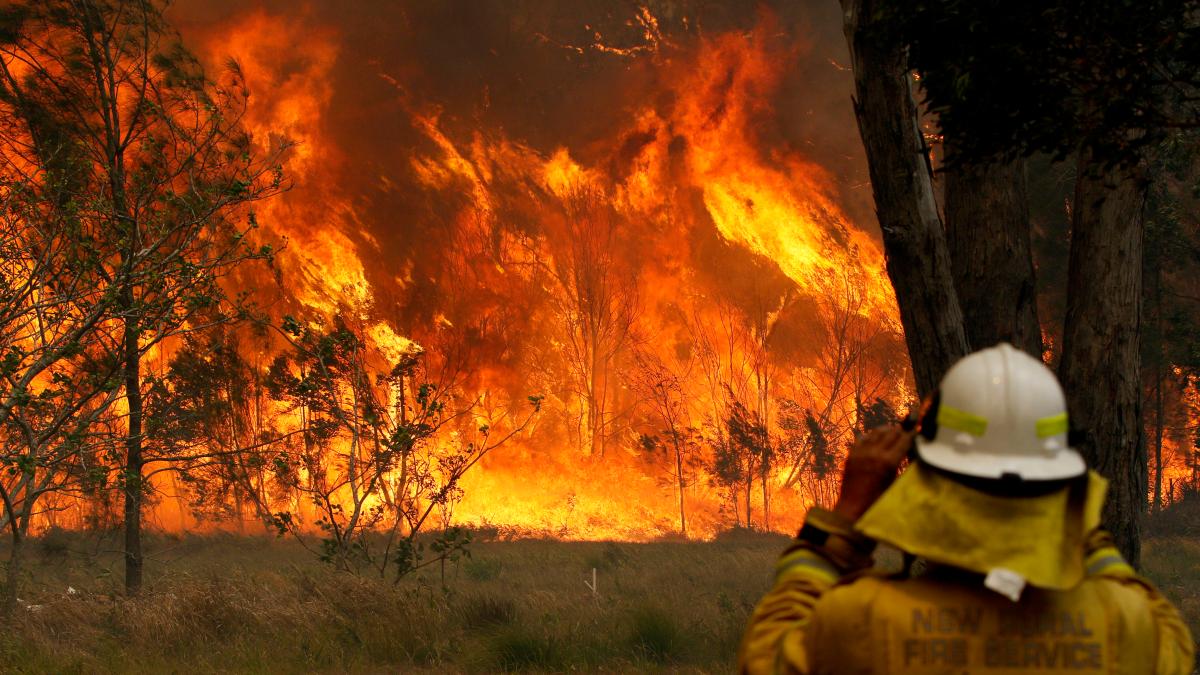
About six million residents in New South Wales have woken to catastrophic bushfire conditions, with the low humidity, strong winds and high temperatures similar to those of the devastating Black Saturday bushfires.
[jwplayer 3pQR2wUR]
For greater Sydney – including the Blue Mountains and the Central Coast – it’s the first time catastrophic fire danger has been forecast since new fire ratings were introduced in 2009. The Hunter and Illawarra / Shoalhaven regions are also in catastrophic conditions.
It is “the worst possible forecast condition” available to the Rural Fire Service, Commissioner Shane Fitzsimmons said this morning.
“Catastrophic reflects what is off the scale of the old conventional fire danger rating system,” he said.
#Fire Danger Ratings map for #NSW for today (Tues). @NSWRFS now has 3 areas listed as #Catastrophic. Important to note that while Greater #Sydney is listed as one, that area extends well beyond the city. In this case Greater Sydney stretches to the #BlueMountains & #CentralCoast pic.twitter.com/3jfCAfrAje
— Bureau of Meteorology, New South Wales (@BOM_NSW) November 11, 2019
What does catastrophic even mean?
Catastrophic is the highest rating – the Bureau of Meteorology also calls it ‘code red’. They look at factors like temperature, wind speeds, humidity, recent rain and vegetation to calculate the danger.
When catastrophic conditions are reached, it means lives and homes are in immediate danger.
Leaving early is the “only option”, says the Rural Fire Service.
Homes are not designed to withstand fires in catastrophic conditions. Any fire that starts and takes hold will threaten lives and homes.
Authorities have warned that there are simply not enough fire trucks for every house.
“If you call for help, you may not get it,” the RFS said.
“Do not expect a firetruck. Do not expect a knock on the door. Do not expect a phone call.”
Stuart Ellis, the chief executive of the Australasian Fire & Emergency Service Authorities Council, told Radio National this morning that the only safe place to be during these bushfires is somewhere else.
“We have not faced many days like this,” he said.

Temperatures are expected to hit 37 degrees today, with wind gusts of up to 70km/h later in the afternoon.
Embers can jump 20 to 30 kilometres in front of a fire, causing spot fires to break out.
More than 600 schools and university campuses have closed today as a matter of precaution. The full list is here.
Meanwhile, more than 100,000 homes are at risk of destruction due to being close to bushfire. Areas where grasslands meets built-up areas, houses on a farm or near a paddock, and homes at the top of a hill are particularly vulnerable (fire travels more quickly uphill).
A total fire ban is in place across the state. NSW is in a state of emergency.
What do you need to know?
Even if you are not in a fire danger area, the smoke can be dangerous to your health.
People with respiratory issues or who are particularly vulnerable are being warned the smoke may aggravate their existing conditions.
“Even healthy adults and children can be impacted by the effects of heavy smoke which can result in lung irritation,” NSW Ambulance said.
“These conditions can have a serious impact on your health and it is important to remember that our bodies have to work extra hard to cope or cool down. Ensure you stay hydrated and pay particular attention to any symptoms (dizziness, headaches, racing pulse or nausea) of heat related illness.”
Do not be afraid to call 000, NSW Ambulance said.
Those at any risk of danger should keep an eye on the NSW Rural Fire Service and the Queensland Rural Fire Service.



